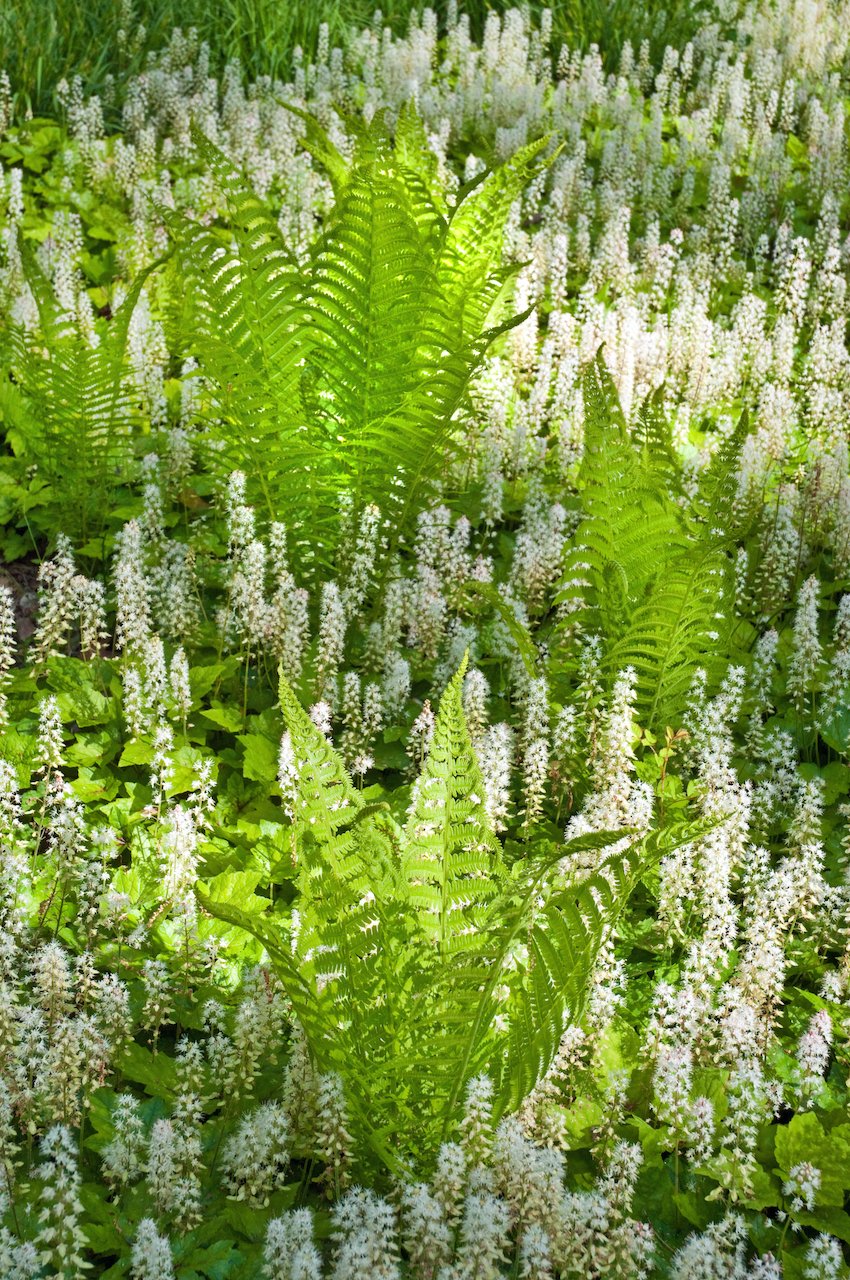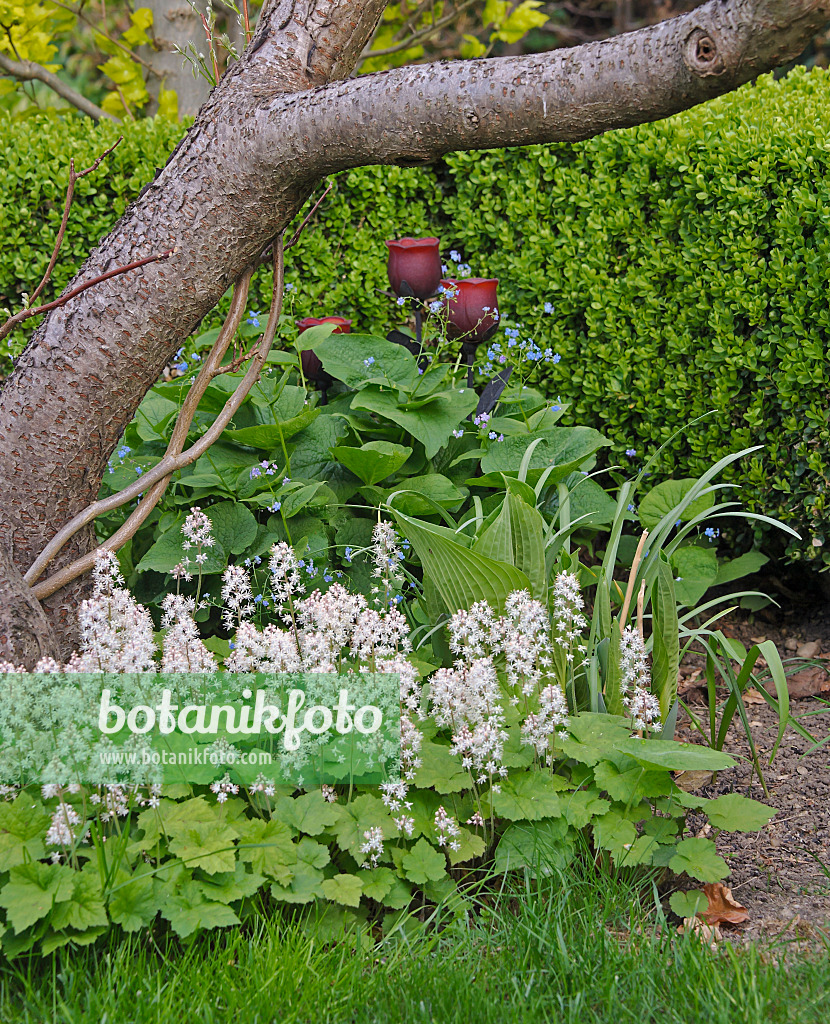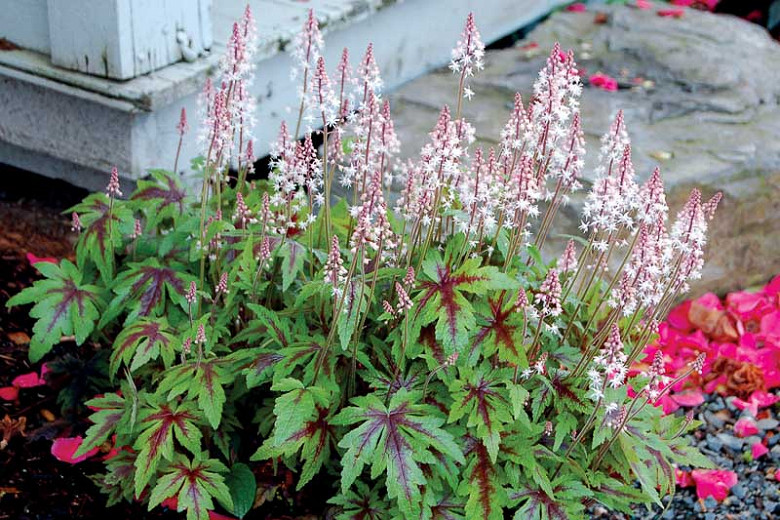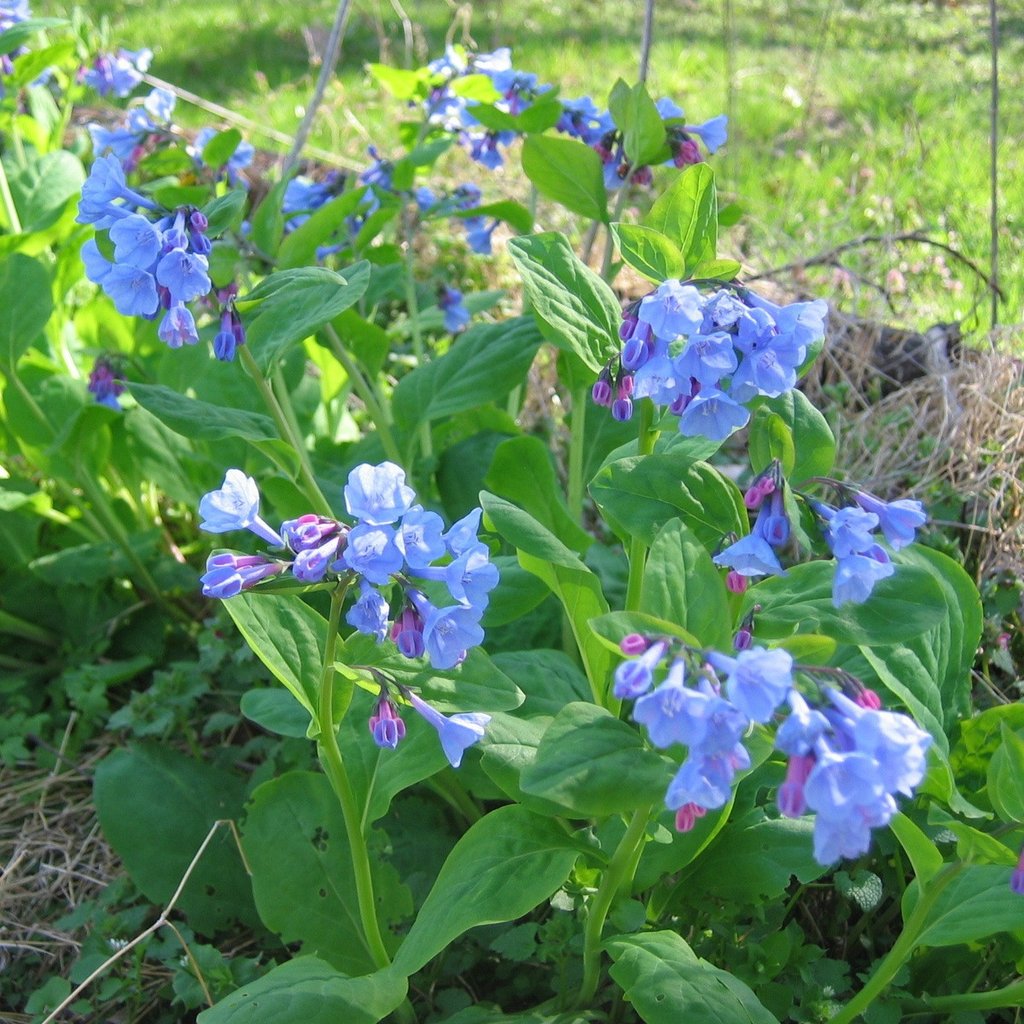Amazing Foam Flower Companion Plants
Foamflower (Tiarella cordifolia) is a shade-loving perennial that is known for its delicate, white or pink flowers that bloom in the spring. It is a low-maintenance plant that is easy to grow and care for, making it a popular choice for woodland gardens and shady borders.
One of the best things about foamflower is its versatility. It can be used in a variety of ways, including as a ground cover, border plant, or filler in a mixed planting. It also makes a great companion plant for other shade-loving plants.
When choosing companion plants for foamflower, there are a few things to keep in mind. First, consider the growing conditions. Foamflower prefers part shade to full shade and moist, well-drained soil. Second, think about the overall look you want to achieve. Do you want to create a lush, green carpet of foamflower, or do you want to add some contrast with other plants?
Here are a few of our favorite foamflower companion plants:
- Hostas are a classic companion plant for foamflower. They both thrive in shady, moist areas and have similar foliage colors. Hostas add height and structure to a planting, while foamflower provides a delicate touch.

- Ferns are another excellent companion plant for foamflower. They add texture and interest to a planting, and their delicate fronds complement the foamflower's flowers. Some good choices for ferns include Japanese painted fern, lady fern, and maidenhair fern.

- Brunnera is a spring-blooming perennial with blue flowers that look great with foamflower's pale pink or white flowers. Brunnera also has attractive, heart-shaped leaves that add interest to the garden throughout the growing season.

- Dicentra, or bleeding heart, is another spring-blooming perennial that pairs well with foamflower. The delicate, heart-shaped flowers of bleeding heart contrast nicely with the foamflower's white or pink flowers.
- Trillium is a woodland wildflower that adds a touch of elegance to any garden. The trillium's white or pink flowers bloom in the spring and are surrounded by three leaves. Trillium prefers part shade to full shade and moist, well-drained soil.

These are just a few of the many companion plants that you can use with foamflower. When choosing companion plants, experiment and have fun! The best way to find the perfect combination is to plant a few different varieties together and see what you like best.
Foamflower (Tiarella cordifolia) is a beautiful, shade-loving perennial that blooms in early spring with delicate white or pink flowers. It is a versatile plant that can be used in a variety of garden settings, and it pairs well with a number of other companion plants.
Some of the best companion plants for foamflower include:
- Ferns: Ferns are a classic choice for companion plants with foamflower. They share similar growing conditions and can help to create a lush, woodland-like atmosphere in the garden. Some good options for ferns include maidenhair fern, Japanese painted fern, and lady fern.
- Hostas: Hostas are another popular choice for companion plants with foamflower. They offer large, dramatic foliage that can provide a visual contrast to the foamflower's delicate flowers. Some good options for hostas include 'June', 'Sum and Substance', and 'Guacamole'.
- Heucheras: Also known as coral bells, heucheras are a group of colorful perennials that can add a touch of brightness to any garden. They are also relatively low-maintenance, making them a good choice for busy gardeners. Some good options for heucheras include 'Palace Purple', 'Firedance', and 'Tango'.
- Bleeding heart: Bleeding heart is a spring-blooming perennial that is known for its delicate, heart-shaped flowers. It is a good choice for companion planting with foamflower because it prefers similar growing conditions and can help to add height and interest to the garden.
- Astilbe: Astilbe is a tall, airy perennial that blooms in late spring and early summer. It is a good choice for companion planting with foamflower because it can help to add structure and height to the garden.
If you are looking for more information about foam flower companion plants, I recommend visiting Gardenia Inspiration. This website provides a comprehensive list of companion plants for foamflower, as well as detailed information about each plant's growing conditions and care requirements.
FAQ of foam flower companion plants
- What are some good companion plants for foamflower?
Foamflower (Tiarella cordifolia) is a shade-loving perennial plant that prefers moist, well-drained soil. It is often used in woodland gardens and borders, and can be paired with a variety of other plants to create a beautiful and harmonious landscape.
Some good companion plants for foamflower include:
- Ferns: Ferns are a classic companion plant for foamflower, as they both thrive in shady, moist areas. Ferns add texture and interest to the garden bed, while foamflower provides a splash of color.
- Hostas: Hostas are another excellent companion plant for foamflower, as they also prefer the same growing conditions. Hostas' larger foliage can provide a nice contrast to the delicate Tiarella flowers and foliage.

- Astilbe: Astilbe is a shade-loving perennial that blooms in the summer with delicate pink, white, or purple flowers. It is a good companion plant for foamflower because it has similar growing requirements and can help to fill in the spaces between foamflower clumps.

- Brunnera: Brunnera is a shade-loving perennial that blooms in the spring with blue or white flowers. It has large, heart-shaped leaves that emerge in the spring and provide interest throughout the growing season. Brunnera is a good companion plant for foamflower because it has similar growing requirements and can help to add color and texture to the garden.

- Heuchera: Heuchera is a shade-loving perennial that blooms in the spring with flowers that can range in color from white to pink to red. It has large, colorful leaves that emerge in the spring and provide interest throughout the growing season. Heuchera is a good companion plant for foamflower because it has similar growing requirements and can help to add color and texture to the garden.

- What are the ideal growing conditions for foamflower?
Foamflower prefers moist, well-drained soil and partial to full shade. It is a hardy plant that can tolerate a wide range of temperatures, but it is best to protect it from hot, dry winds. Foamflower is also susceptible to root rot, so it is important to avoid planting it in areas where the soil is prone to staying wet.
- How do I care for foamflower?
Foamflower is a relatively low-maintenance plant. It requires regular watering, especially during the spring and summer months. It is also helpful to mulch around the base of the plant to help retain moisture and suppress weeds. Foamflower does not need to be fertilized often, but a light application of fertilizer in the spring can help to promote flowering.
- How do I propagate foamflower?
Foamflower can be propagated by division or by seed. Division is the easiest method and can be done in the spring or fall. To divide foamflower, simply dig up the plant and separate the rhizomes into smaller clumps. Replant the clumps in well-drained soil and water well.
Seed propagation is more difficult, but can be successful if done in the fall. Sow the seeds in a well-drained potting mix and keep the mix moist. The seeds will germinate in the spring.
- What are some common pests and diseases of foamflower?
Foamflower is susceptible to a few common pests and diseases, including:
- Aphids: Aphids are small, sap-sucking insects that can damage foamflower plants. They can be controlled with insecticidal soap or neem oil.

- Leaf spot: Leaf spot is a fungal disease that can cause brown or black spots on the leaves of foamflower plants. It can be controlled with a fungicide.
- Rust: Rust is another fungal disease that can cause orange or brown spots on the leaves of foamflower plants. It can be controlled with a fungicide.

If you notice any pests or diseases on your foamflower plants, it is important to take steps to control them as soon as possible to prevent the problem from spreading.
Image of foam flower companion plants
5 different images of "foam flower companion plants" from Pinterest:
- Astilbe is a delicate, fern-like plant that blooms in shades of pink, white, and purple. It prefers moist, shady areas, and can help to suppress weeds.

- Hosta is another shade-loving plant that comes in a variety of colors, including green, blue, and yellow. It is tolerant of deer and rabbits, and can help to add structure to a border.

- Coralbells is a low-maintenance plant that blooms in shades of pink, red, and white. It prefers moist, well-drained soil, and can tolerate full sun to partial shade.
- Lamium is a hardy plant that blooms in shades of pink, white, and purple. It is deer-resistant and drought-tolerant, and can tolerate full sun to partial shade.

- Virginia bluebells is a native wildflower that blooms in shades of blue and purple. It prefers moist, shady areas, and can help to attract butterflies and hummingbirds.


Post a Comment for " Amazing Foam Flower Companion Plants"